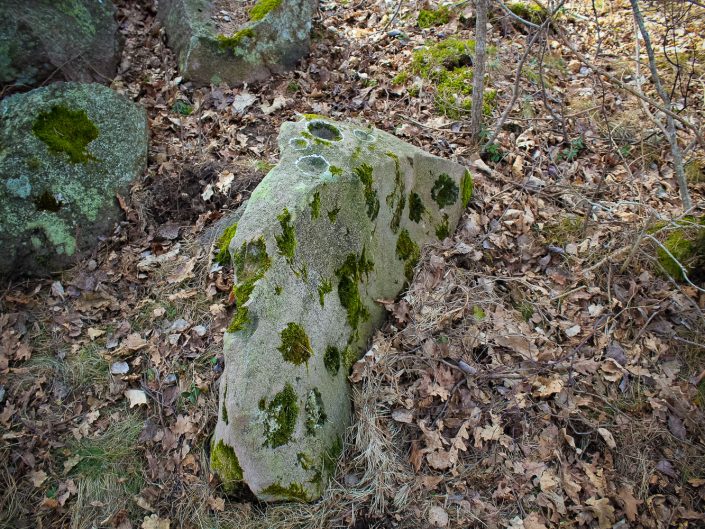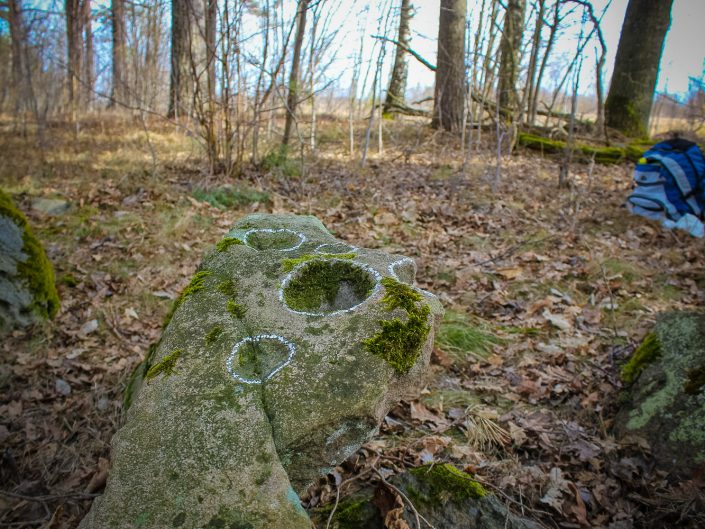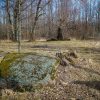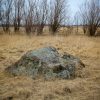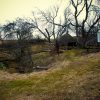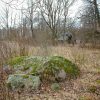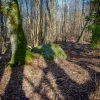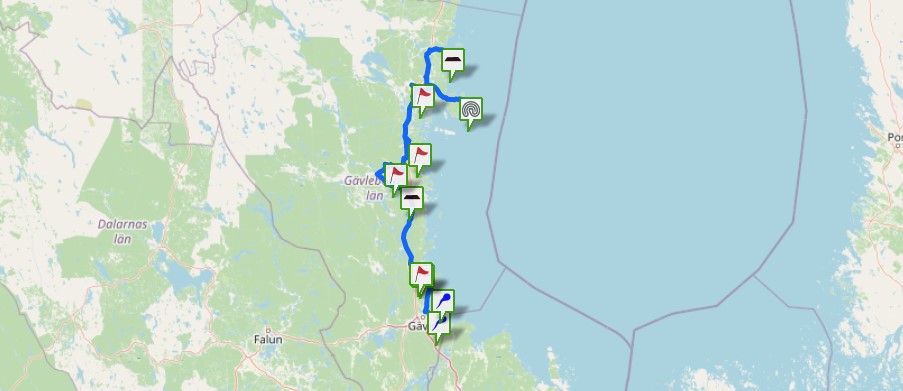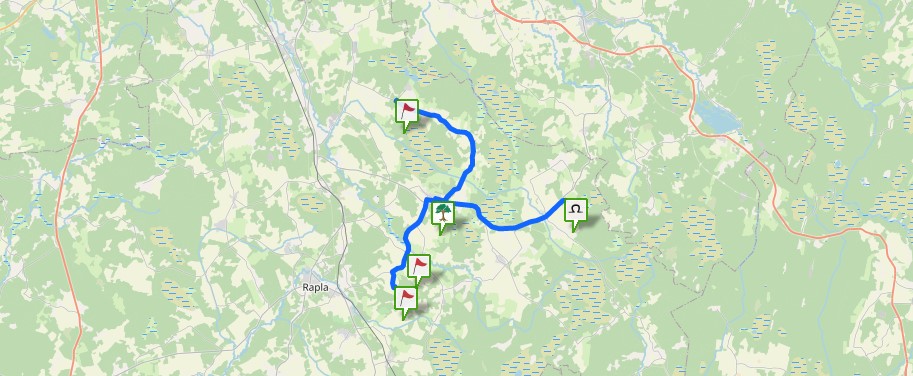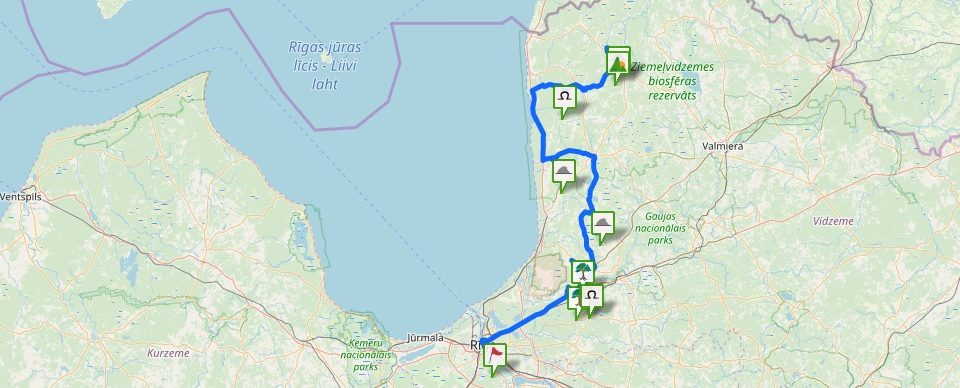A cup-marked stone and a stone of archaeological significance. Dimensions: length 1.2 m, width 0.35 m, height 0.50 m, circumference 2.65 m, volume just 0.1 m3. Granite — grey-brown, from the dark materials it contains biotite. The stone surface is heavily eroded. It is a fragment from some bigger boulder, which has split along the cracks.The stone has most likely been moved. It seems that somewhere here a remarkable ancient cult stone with a big number of cup marks used to lie, but just one fragment has remained from that. On the latter there are quite many cavities made by ancient people. The cup-marked stone was discovered by the inspector of the State Inspection for Heritage Protection of Latvia Ingrīda Vize on 16 July, 2004.
On the stone surface it is easy to see five believable quality hollows, one likely hollow and two semi- hollowed cup marks. The biggest cup mark is of a funnel shape, 4 cm deep. On the E side of the stone which is the side where the stone was torn or broken during splitting, two of the cup-marks have been damaged and have been preserved just partly. One rather believable cup mark is located at the SW end of the NW side and some eroded jags on the NW end. However, in the NE corner at the ground there are two questionable quality marks which most likely are the result of erosion. It is possible that the Gauri cup-marked stone is an example of using a stone with jagged erosions for making cup marks on it because in such erosions it is much easier to make cup marks than on an even stone.
The stone has to be taken under the state protection as an archaeological monument. The volume of the above-the-ground surface of the stone accounts for 90%. Next to the cup-marked stone, southwards from it, there are 7 rather big stones, some of which have drills in it. Still 3 other stones lie on the other side of the cup-marked stone. No cavities have been found in any of them.
Extra materials:
Contains information from the project:

Added by
Founder and maintainer of www.latvijas-pilskalni.lv, www.senvietas.lv and hillforts.eu.
